Education
![]()
What and Why | Let's Tackle Scientific Problems | Junior High School Science | Only One Earth | Science Club | Whiz Bang Science | Maths Wonderland | Digital Pictorial Book - Nature in Japan - | Experiments Are Fun | Pythagora Switch | Pythagora Switch II | Pythagora Switch III | Pythagora Switch IV | Let's Get Movin' | Science Sleuth | ABU Voyage to the Future | The Science Station | We Love Science | Joule & Professor Watt | Wonderful Science | KIDS SURVIVAL SCHOOL | What Can We Do? Our Planet’s Future | Listen to the Earth | The Power to Save Lives in Disasters | Let's enjoy Math with Barky the Dog | LIFE IS A CHALLENGE | Bravo to Music! | TAKE TECH | Viewpoint Science | Story Land | Endless Wonders | TEXICO |
 TEXICO | TEXICO
TEXICO | TEXICO
ED332100![]()
テキシコー 2021年度 [NHK]
![]()
![]()

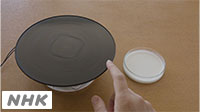
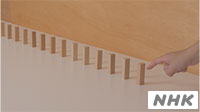
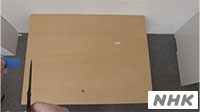
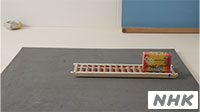
|Length : 10min. X5 |Year : 2021 |
(Episode 6)
(Episode 7)
(Episode 8)
(Episode 9)
(Episode 10)
 TEXICO | TEXICO
TEXICO | TEXICO
ED332000![]()
テキシコー 2020年度 [NHK]
![]()
![]()
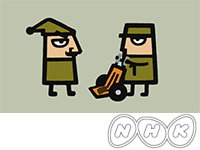
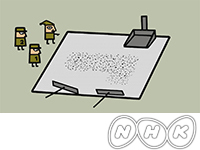

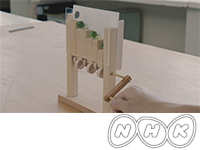
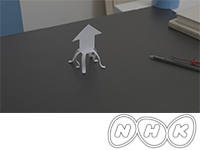
|Length : 10min. X5 |Year : 2020 |
(Episode 1)
(Episode 2)
(Episode 3)
(Episode 4)
(Episode 5)
 Endless Wonders | Endless Wonders 2021
Endless Wonders | Endless Wonders 2021
ED322100![]()
ふしぎエンドレス 2021年度 [NHK]
![]()
![]()
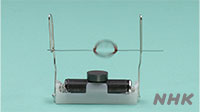
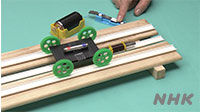

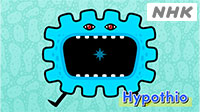

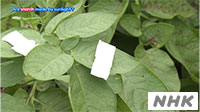

|Length : 10min. X8 |Year : 2021 |
(5th How can you make motors spin?)
In this episode, children make predictions on how they can make motors spin and think about how they can verify their ideas. What should happen if your prediction is correct? Give it a thought!
(5th How does it move forward?)
In this episode, children think about why a toy car is able to move on a rail. The rail is fitted with electromagnets, and the toy car has a magnet on it. Why is it that the car can move froward? And how would it be possible to make it move even further?
(6th What happens when things burn?)
What happens to air when something is burned? The children use a lit candle and limewater to check what happens to each of the main gases that make up the air, namely nitrogen, oxygen, and carbon dioxide for clues to hypothesize on. Will the children in this episode be able to gain a reasonable understanding of the phenomenon? Tune in to find out!
(6th Why do fires go out?)
Why do fires go out? The children use limewater and a gas detector to check each of the main gases that make up the air, namely nitrogen, oxygen, and carbon dioxide for clues to hypothesize on. Join the children and the Wonder Monsters as they set out to find out more about this scientific wonder!
(6th Where does starch come from? ーPlanning the experimentー)
Starch is the nutrient plants thrive on. To learn where exactly starch can be found in a plant, children look at the root, stem, and leaves of a plant, and discover that starch is actually stored only in large amounts in the leaves. They hypothesize why that is the case, and then come up with ideas for an experiment that would enable them to examine whether their hypothesis is correct. What great ideas will the children come up with? Tune in to find out!
(6th Where does starch come from? ーObservationsー)
Plants thrive on starch. The children conduct an experiment to test out their hypothesis that starch is produced when sunlight shines on the leaves. They then look at the results of the experiment and think further about the phenomenon. Join the children as they put on their thinking caps to come up with great ideas. And will they be able to reach a reasonable understanding of how plants produce starch? Tune in to find out!
(6th The structure of the human body ーIngestion and respirationー)
What happens to the food we eat and the air we breathe after we put them in our bodies? The episode includes footage that will make the viewers think about the bodily functions that allow us to take in nutrients and oxygen, both of which are essential for our survival. Will the children in this episode be able to gain a reasonable understanding of the phenomenon? Tune in to find out!
(6th The structure of the human body ーObservationsー)
What happens to the food we eat and the air we breathe after we put them in our bodies? The episode includes footage that will make the viewers think about the bodily functions that allow us to take in nutrients and oxygen, both of which are essential for our survival. Will the children in this episode be able to gain a reasonable understanding of the phenomenon? Tune in to find out!
 Endless Wonders | Why Doesn’t Oxygen Run Out?
Endless Wonders | Why Doesn’t Oxygen Run Out?
ED322318![]()
第10回 なぜ酸素はなくならない? [NHK]
![]()
![]()

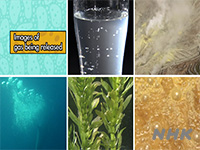



|Length : 10min |Year : 2023 |
Endless Wonders is a science program for elementary schoolers. The “Wonder Monsters” featured in the program will take children on a journey to discover and challenge the wonders that can be found around them, through exciting footages and everyday references.
These episodes are mainly aimed for 6th graders. In each episode, the Wonder Monsters present a particular everyday “wonder.” From investigating the wonders around you, what can you say? How much can you find out? The program encourages the children to give things a thorough thought. By looking at the results of more than one experiment, they are taught the importance of looking at things from different sides to reach a conclusion.
The discussions and sharing of ideas between the elementary schoolchildren who appear, serve as hints for the viewer to start thinking science too.
Why doesn't oxygen disappear from the Earth’s air? The children hypothesize its relationship to plants, based on various situations in which gas is released. Results from experiments conducted to confirm this tell us when oxygen is produced. What will the children discuss as they search for answers? Tune in to find out!
 Endless Wonders | How Are Living Things Connected?
Endless Wonders | How Are Living Things Connected?
ED322317![]()
第9回 生き物どうしのつながりは? [NHK]
![]()
![]()



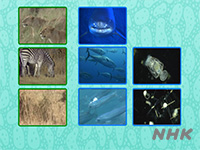

|Length : 10min |Year : 2023 |
Endless Wonders is a science program for elementary schoolers. The “Wonder Monsters” featured in the program will take children on a journey to discover and challenge the wonders that can be found around them, through exciting footages and everyday references.
These episodes are mainly aimed for 6th graders. In each episode, the Wonder Monsters present a particular everyday “wonder.” From investigating the wonders around you, what can you say? How much can you find out? The program encourages the children to give things a thorough thought. By looking at the results of more than one experiment, they are taught the importance of looking at things from different sides to reach a conclusion.
The discussions and sharing of ideas between the elementary schoolchildren who appear, serve as hints for the viewer to start thinking science too.
In this episode, we look into connections between living things. First, the children study what connections there are between the living things around us, using the “eat and be eaten” relationship in grasslands and the sea as clues. The children then consider cases where some creatures become extinct. Through this activity, what will they discuss as they search for answers? Tune in to find out!















